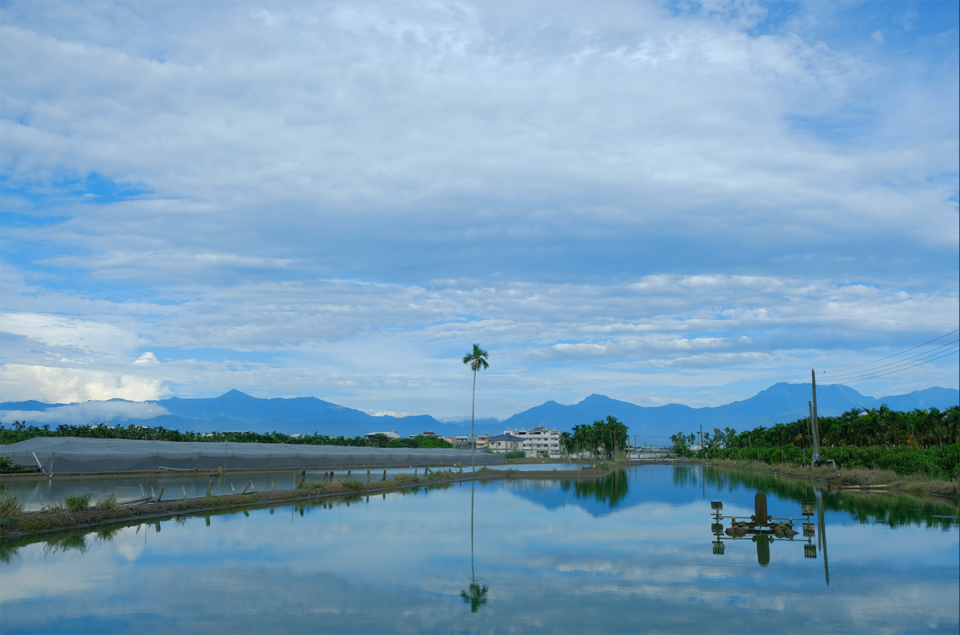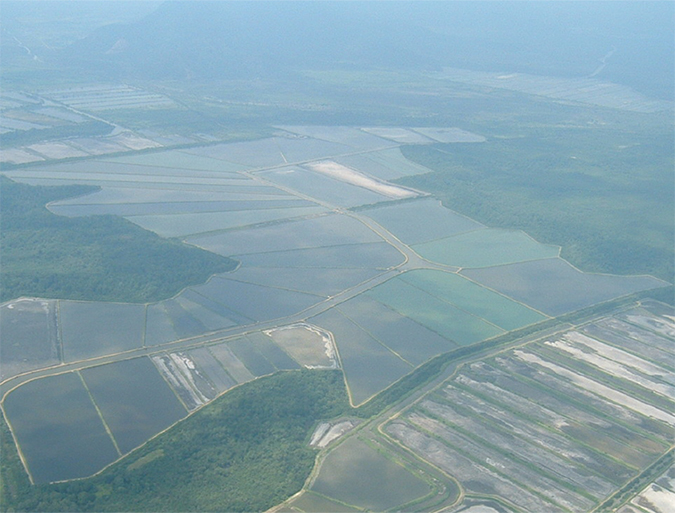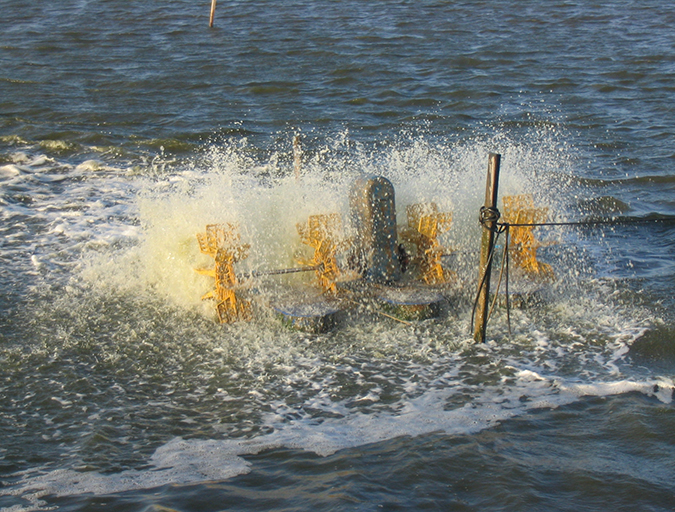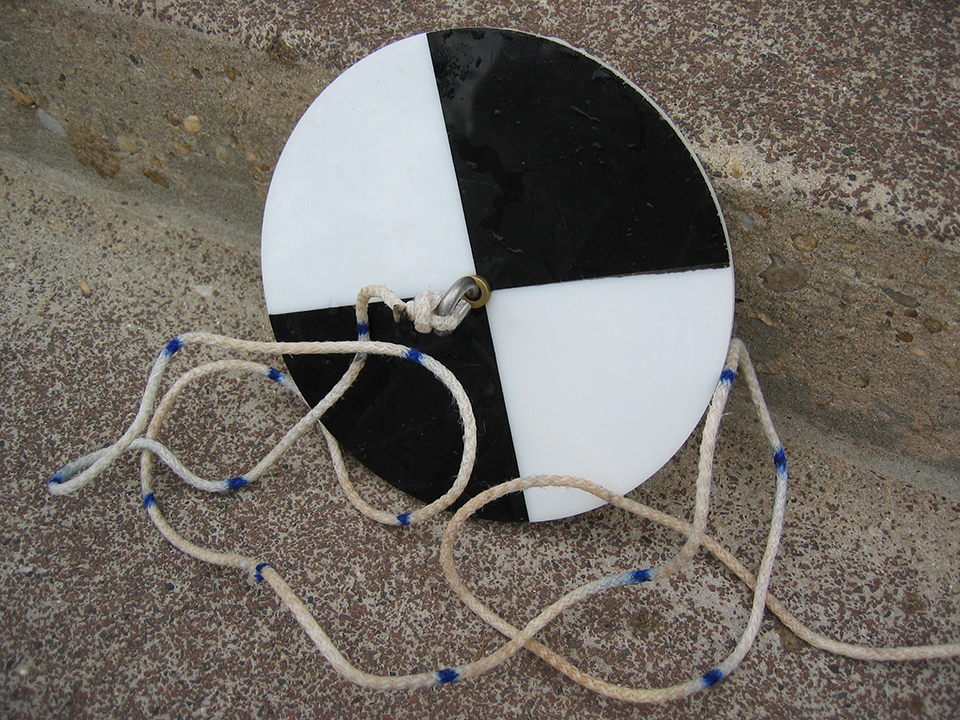Production facilities should be constructed and managed considering the potential for storms, droughts, ice cover and other events

Weather and climate are major factors affecting all types of agriculture, including aquaculture. About 20 years ago, I prepared a section on aquaculture for an agricultural meteorology manual for the World Meteorological Organization. Considerable information was found on temperature effects on aquaculture, but little about other weather variables and the same situation continues today.
Water temperature exerts major limitations in aquaculture production, and water temperature in most culture systems is under the control of the climate. The species for culture at any particular place must be selected so that the range in temperature tolerance of the species chosen is in harmony with the local climate and normal water temperature ranges. The timing of stocking and harvest operations must be within a period of suitable water temperatures, and this may limit the crop duration possible. In shrimp aquaculture it is well known that growth rate in the cool season is less than in the warm season, resulting in greater crop duration to produce a given-size shrimp in the cool season than in the warm season.
There are coldwater species (rainbow trout and other salmonids), warmwater species (ictalurid catfish, bait minnows, carps, etc.) and tropical species (penaeid shrimp, tilapia and many others). Among these three classes of temperature tolerance, most species within a class have different tolerable temperature ranges.
The rates of chemical reactions increase by a factor of 2 or 3 for every 10 degrees-C increase in temperature. This also applies to physiological processes which regulate growth. Within the optimal temperature range for an aquatic animal, its growth rate usually will roughly double in response to a 10 degrees-C increase within the favorable temperature range for growth. This is equivalent to about a 10 percent increase in growth for each 1 degree-C increment. Of course, there is an optimal temperature for growth of each species, and when this is exceeded, growth slows.
There is wide belief that rainfall will increase dissolved oxygen concentration in ponds. Rainfall is saturated with dissolved oxygen as it falls; but, because the volume of rainfall falling into a pond is not great, the amount of dissolved oxygen delivered is modest. A rainfall event of 10 cm with a rainwater temperature of 20 degrees-C would deliver 9,070 grams of dissolved oxygen. In a 1.5-meter deep pond, this is only 0.60 milligrams per liter (mg/L) of dissolved oxygen. Most rainfall events are less than 10 cm.
Higher water temperature results in a lower solubility of dissolved oxygen in water. For example, freshwater at 20 degrees-C and standard atmospheric pressure contains 9.07 mg/L dissolved oxygen, but at 30 degrees-C, only 7.54 mg/L. Nevertheless, both of the situations represent 100 percent saturation with dissolved oxygen, and aquatic animals respond to percentage saturation of dissolved oxygen rather than concentration (mg/L) of dissolved oxygen. Of course, the problem is that respiration rates increase with temperature, and less dissolved oxygen is available at higher temperature when respiration is using more dissolved oxygen.
Cloud cover, winds and hurricanes
Cloud cover, especially completely overcast skies, reduce the amount of light available for photosynthesis by phytoplankton in ponds. This can result in lower concentrations of dissolved oxygen at the end of the daylight period and a lower concentration of dissolved oxygen during the night when photosynthesis ceases. As a result, overcast skies and especially consecutive days of overcast skies may result in stress or even mortality from decreased nighttime dissolved oxygen concentration in ponds without aeration or inadequate aeration.
In areas where strong winds are a common phenomenon, these winds create wave action that greatly accelerates the rate of gas exchange with the atmosphere. This improves oxygenation and diffusion of potentially toxic and gaseous metabolites such as ammonia, carbon dioxide and hydrogen sulfide from the water. Wind mixing also discourages thermal stratification in aquaculture ponds and creates deep circulation to move oxygenated water across the pond bottom to avoid anaerobic zones at the sediment-water interface.
Heeding the likelihood of adverse weather and climatic factors at a particular location and constructing and operating facilities to protect against such events are the mark of wise aquaculture facility owners and managers.
The negative effect of strong winds in ponds is mainly to increase erosion of pond earthwork by waves breaking on embankments. Of course, in ponds with dense algal blooms, heavy winds also can result in large algal scums along the leeward side and especially in corners.
Strong winds can cause thermal destratification of water bodies even in the tropics. The deeper waters, which may be completely depleted of dissolved oxygen, will be mixed with oxygenated surface waters diluting the dissolved oxygen concentration. The deeper waters also may contain a large amount of organic matter and other reduced substances which remove dissolved oxygen from the surface waters when the two layers are mixed by destratification. This effect has led to numerous spectacular fish kills in cage aquaculture farms in lakes over the years.
Atmospheric pressure is thought by many anglers to effect fishing success, and there is some evidence that higher atmospheric pressure favors better fishing. To my knowledge, there is no evidence to support a hypothesis that fish or shrimp consume feed better in relation to greater atmospheric pressure. Higher atmospheric pressure does increase dissolved oxygen solubility in water, but the increase is slight. For example, at 30 degrees-C in freshwater, the dissolved oxygen solubility is 7.54 mg/L at 760 mm Hg, but only 7.64 mg/L at 770 mm Hg and 7.44 mg/L at 750 mm Hg.
Hurricanes in coastal areas may sometimes cause storm surges and flooding that can overtop pond embankments, allowing escapes of aquatic animals. Cages and net pens also can be damaged by heavy waves resulting from hurricanes and strong storms resulting in damage to cages and escapees.
Drought
Drought can cause serious problems in aquaculture and especially at facilities depending upon surface sources of freshwater. Ponds filled by overland flow (storm runoff) may decrease greatly in volume. This crowds the culture animals into less volume, and it also concentrates potentially toxic metabolites. It also concentrates nutrients which can lead to excessive phytoplankton blooms and dissolved and particulate organic matter concentrations increase, resulting in a greater oxygen demand being exerted by microbial decomposition.
In estuaries with restricted connection to the sea and little tidal flushing, drought reduces freshwater inflow and salinity increases at an abnormal rate in response to evaporation. This elevation in salinity may exceed the optimal salinity range of shrimp or other culture species.
Ice cover
Ice cover in winter can be a serious threat to aquatic animals held in ponds. Aquaculture ponds have higher concentrations of organic matter than typically found in small, natural water bodies where ice cover has no serious effect on the aquatic fauna.
In aquaculture ponds, as in natural ponds, photosynthesis will provide little dissolved oxygen during the period of ice cover. This meager production of dissolved oxygen will normally suffice for the natural pond. But, in the aquaculture pond, decomposition of organic matter and the respiration of the greater biomass of the aquaculture animals often depletes the dissolved oxygen supply, which cannot be supplemented by diffusion of atmospheric oxygen because of the surface ice layer. Mortality of the culture animals is highly probable in such situations.
Perspectives
The weather and climate related events mentioned above are the most common ones affecting aquaculture, but there are probably others. These events will occur at some statistical frequency, which may or may not be known for a particular location. There is nothing that humans can do to prevent these events from happening. The events are natural phenomena regulated by natural processes over which we have no control.
However, aquaculture facilities should be constructed and managed with these events in mind. Heeding the likelihood of adverse weather and climatic factors at a particular location and constructing and operating facilities to protect against such events are the mark of wise aquaculture facility owners and managers.
Nothing was said here regarding climate change about which people seem to spend much time worrying about how it will affect the future of aquaculture. This also is a process too complicated to predict – just look at the ranges in effects predicted by the models. These models predict effects several times greater than do other models.
However, the annual climate extremes index which assesses the frequency of extreme temperatures, precipitation, droughts, storm, etc. fluctuated from 1920 until the mid-1970s in the United States with no trend in change. Since the 1970s the index has shown a clear trend of increase. This is a reason to pay more attention to the possibility of adverse weather and climatic factors on aquaculture.
Now that you've reached the end of the article ...
… please consider supporting GSA’s mission to advance responsible seafood practices through education, advocacy and third-party assurances. The Advocate aims to document the evolution of responsible seafood practices and share the expansive knowledge of our vast network of contributors.
By becoming a Global Seafood Alliance member, you’re ensuring that all of the pre-competitive work we do through member benefits, resources and events can continue. Individual membership costs just $50 a year.
Not a GSA member? Join us.
Author
-

Claude E. Boyd, Ph.D.
School of Fisheries, Aquaculture and Aquatic Sciences
Auburn University
Auburn, Alabama 36849 USA
Tagged With
Related Posts

Responsibility
Reviewing the ‘near-magical’ properties of water
Understanding the hydrologic cycle, water’s unique physical properties and their behavior in aquaculture systems – phases, humidity, saturation, stratification, light reflection and refraction – is pertinent to properly manage water quality in production systems, according to world-renowned expert Dr. Claude Boyd.

Responsibility
Does Coriolis force impact aerator placement in aquaculture ponds?
The Coriolis effect has no bearing on aerator placement and aquaculture pond management. The most important consideration with mechanical aeration is to provide a sufficient amount to maintain adequate dissolved oxygen concentration.

Responsibility
Effluent effects from aquaculture ponds
In general, lower-intensity pond and cage farming tends to discharge higher overall pollution loads in farm effluents than closed aquaculture systems.

Responsibility
Secchi disk visibility: Correct measurement, interpretation
It would be difficult to find a pond aquaculture worker who has not measured Secchi disk visibility or at least seen someone measure it.


